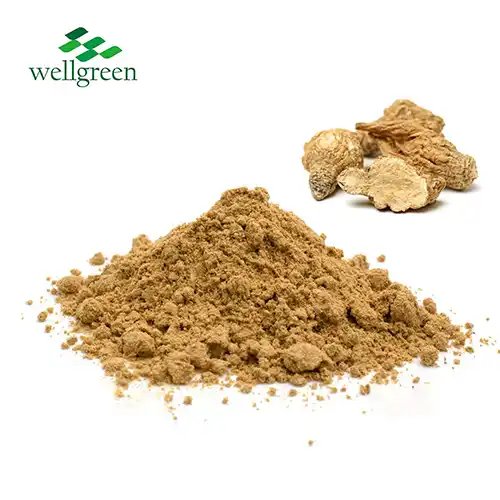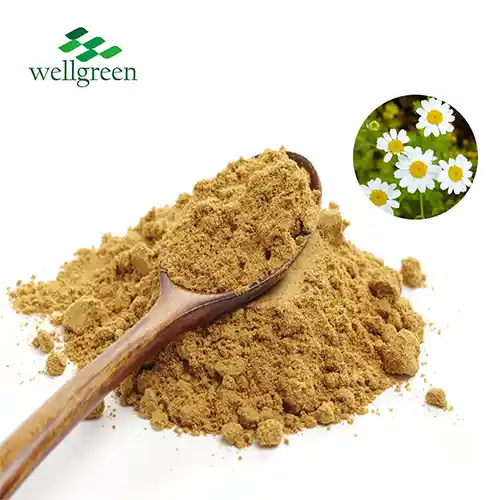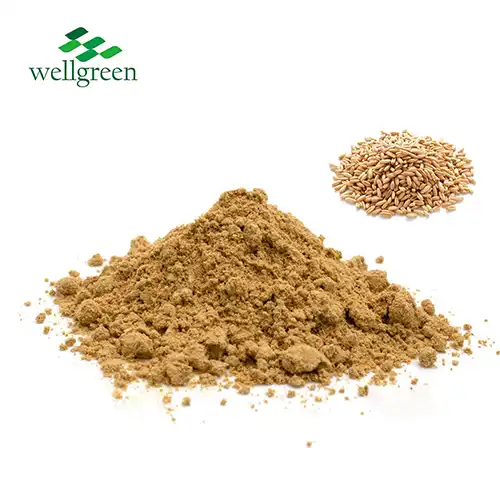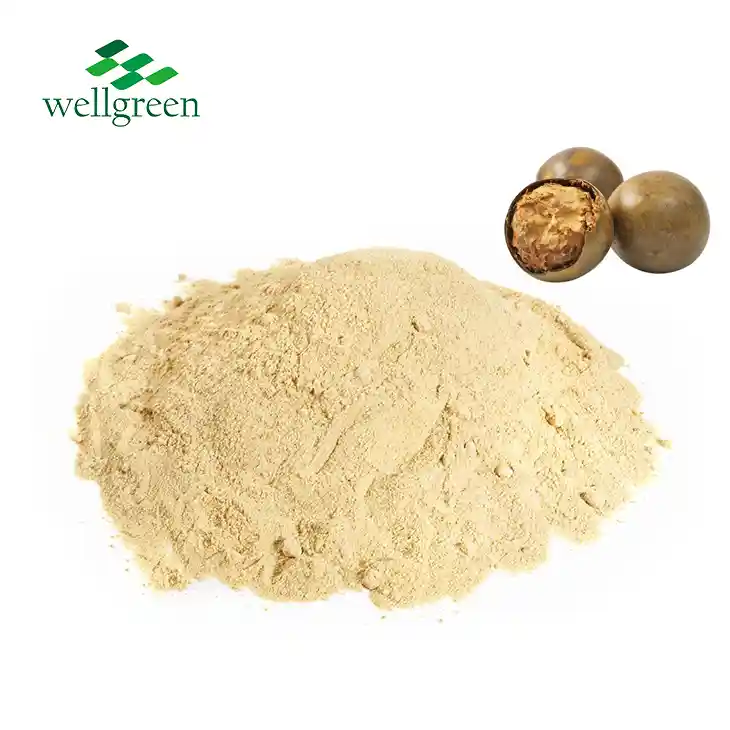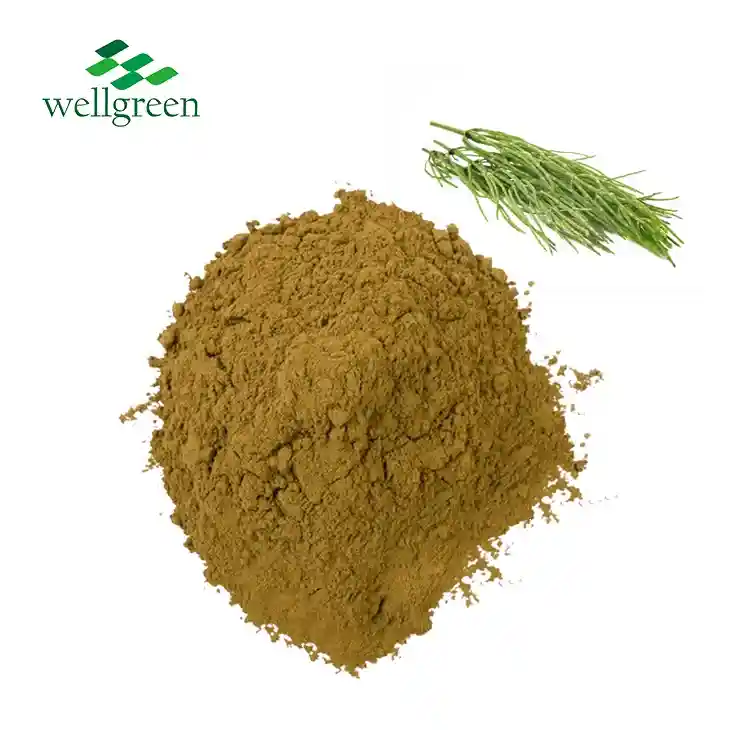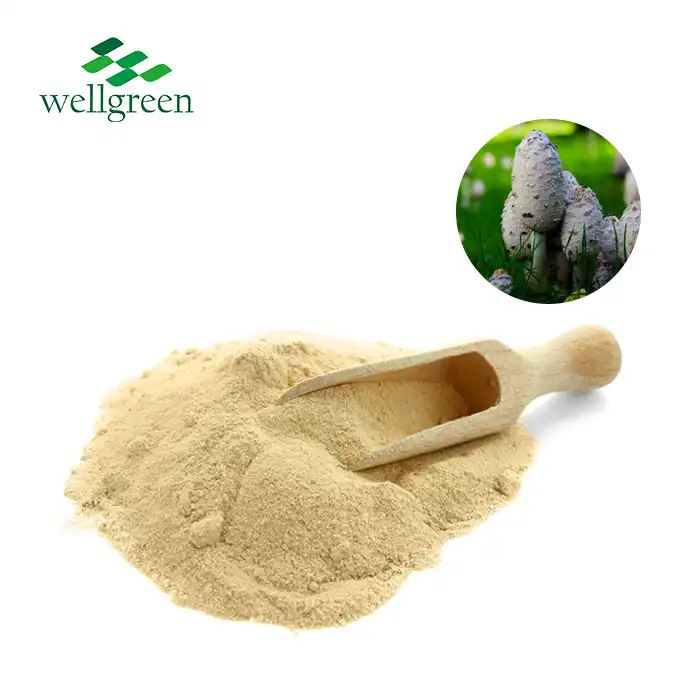What Is Horse Chestnut Extract Powder?
2025-09-09 14:55:08
Horse chestnut extract powder is a natural supplement derived from the seeds of the horse chestnut tree (Aesculus hippocastanum). This finely ground powder contains potent bioactive compounds, primarily escin, which have been traditionally used for their anti-inflammatory and circulatory benefits. Horse chestnut seed extract powder is renowned for its potential to support vascular health, particularly in improving chronic venous insufficiency symptoms. As a concentrated form of the tree's beneficial components, this powder offers a convenient way to harness the therapeutic properties of horse chestnut in dietary supplements and natural health products. Its growing popularity stems from its potential to promote leg vein health, reduce swelling, and enhance overall circulation when used as part of a balanced wellness regimen.

How Is Horse Chestnut Extract Powder Made?
Harvesting and Selection
The production of horse chestnut extract powder begins with the careful harvesting of horse chestnut seeds. Typically, this occurs in autumn when the seeds have reached full maturity. Skilled harvesters select only the highest quality seeds, ensuring they are free from damage or disease. This initial selection process is crucial as it directly impacts the final product's potency and purity.
Extraction Process
Once harvested, the seeds undergo a meticulous extraction process. This involves removing the outer shell and grinding the inner seed material into a fine consistency. The ground seeds are then subjected to a solvent extraction method, often using ethanol or water. This process helps isolate the desired active compounds, particularly escin, from the raw plant material. The extraction is carefully controlled to maximize the yield of beneficial components while minimizing the presence of unwanted substances.
Purification and Concentration
Following extraction, the resulting liquid undergoes further purification steps. These may include filtration, centrifugation, and chromatography techniques to remove any remaining impurities or toxic components. The purified extract is then concentrated through evaporation or spray-drying methods. This concentration process results in a fine, potent powder that retains the key bioactive compounds of horse chestnut seeds. The final product is standardized to ensure a consistent level of active ingredients, particularly escin, in every batch of horse chestnut extract powder.
Active Compounds in Horse Chestnut Extract Powder
Escin: The Primary Active Ingredient
Escin, also known as aescin, is the star component of horse chestnut seed extract powder. This complex mixture of triterpenoid saponins is responsible for many of the extract's therapeutic properties. Escin exhibits potent anti-inflammatory and venotonic effects, meaning it can strengthen vein walls and improve circulation. Research has shown that escin can reduce capillary permeability and enhance venous tone, making it particularly beneficial for conditions related to poor circulation in the legs.
Flavonoids and Other Beneficial Compounds
In addition to escin, horse chestnut extract powder contains a variety of flavonoids. These include quercetin, kaempferol, and rutin, which contribute to the extract's antioxidant properties. These flavonoids work synergistically with escin to enhance its effects on vascular health. The powder also contains other beneficial compounds such as tannins and sterols, which may contribute to its overall therapeutic profile. The presence of these diverse compounds underscores the complex nature of horse chestnut extract and its potential for multi-faceted health benefits.
Standardization of Active Compounds
Quality horse chestnut extract powder is typically standardized to contain a specific percentage of escin, usually ranging from 16% to 20%. This standardization ensures consistency in potency and efficacy across different batches of the product. The standardization process involves careful analysis and adjustment of the extract to achieve the desired concentration of active compounds. This attention to detail in standardization is crucial for maintaining the reliability and effectiveness of horse chestnut extract powder in various applications, from dietary supplements to topical formulations.

Quality Standards for Horse Chestnut Extract Powder
Purity and Contaminant Testing
Ensuring the purity of Aesculus hippocastanum extract is paramount in maintaining its quality and safety. Rigorous testing protocols are implemented to detect and eliminate potential contaminants. These tests typically include screening for heavy metals, pesticide residues, and microbial contamination. Advanced analytical techniques such as high-performance liquid chromatography (HPLC) and mass spectrometry are often employed to verify the powder's composition and detect any adulterants. This meticulous approach to purity testing helps guarantee that the final product meets stringent safety standards and is free from harmful substances.
Potency and Standardization Verification
The potency of horse chestnut extract powder is a critical aspect of its quality. Manufacturers employ various analytical methods to verify that each batch meets the specified standardization levels, particularly for escin content. This often involves quantitative analysis using spectrophotometric or chromatographic techniques. Regular potency testing ensures that the extract powder consistently delivers the expected therapeutic effects. Additionally, stability testing is conducted to determine the product's shelf life and ensure that it maintains its potency over time under proper storage conditions.
Compliance with Regulatory Standards
High-quality horse chestnut extract powder must comply with various regulatory standards set by governing bodies worldwide. This includes adherence to Good Manufacturing Practices (GMP) throughout the production process. Manufacturers must also ensure their products meet the specifications outlined in pharmacopeias and herbal monographs. Compliance with these standards often requires comprehensive documentation of the entire production process, from raw material sourcing to final product testing. Regular audits and certifications from recognized authorities further validate the quality and reliability of the horse chestnut extract powder.
Conclusion
Horse chestnut extract powder stands out as a remarkable natural supplement with a rich history and promising health benefits. Its carefully controlled production process, from seed selection to final standardization, ensures a high-quality product rich in beneficial compounds, particularly escin. The powder's potential to support vascular health and alleviate symptoms of chronic venous insufficiency makes it a valuable addition to the world of natural health products. As research continues to unveil its therapeutic properties, horse chestnut extract powder remains a subject of interest for both consumers and healthcare professionals seeking natural solutions for circulatory health.
Contact Us
For more information about our premium horse chestnut extract powder and other plant-based supplements, please contact Xi'an Wellgreen at wgt@allwellcn.com. As a trusted horse chestnut extract powder manufacturer and supplier, we are ready to support B2B procurement, bulk orders, and distribution needs. Our team of experts can assist with any questions.
References
1. Pittler MH, Ernst E. Horse chestnut seed extract for chronic venous insufficiency. Cochrane Database Syst Rev. 2012;
2. Sirtori CR. Aescin: pharmacology, pharmacokinetics and therapeutic profile. Pharmacol Res. 2001;
3. Dudek-Makuch M, Studzińska-Sroka E. Horse chestnut - efficacy and safety in chronic venous insufficiency: an overview. Rev Bras Farmacogn. 2015;
4. Ottillinger B, Greeske K. Rational therapy of chronic venous insufficiency - chances and limits of the therapeutic use of horse-chestnut seed extract. BMC Cardiovasc Disord. 2001;
5. Wilkinson JA, Brown AM. Horse chestnut - Aesculus hippocastanum: potential applications in cosmetic skin-care products. Int J Cosmet Sci. 1999;
6. Guillaume M, Padioleau F. Veinotonic effect, vascular protection, antiinflammatory and free radical scavenging properties of horse chestnut extract. Arzneimittelforschung. 1994;

